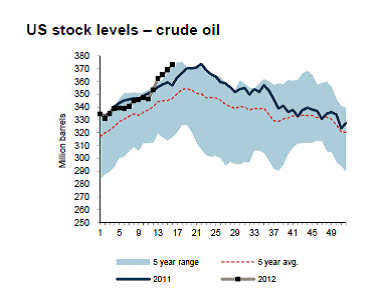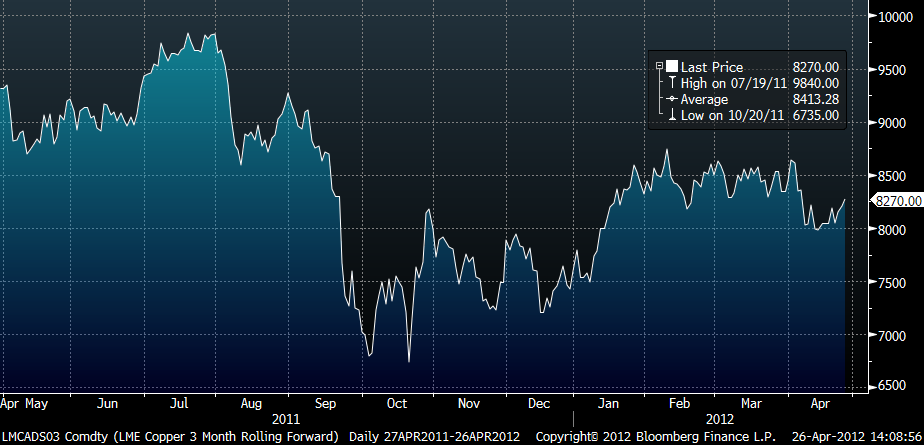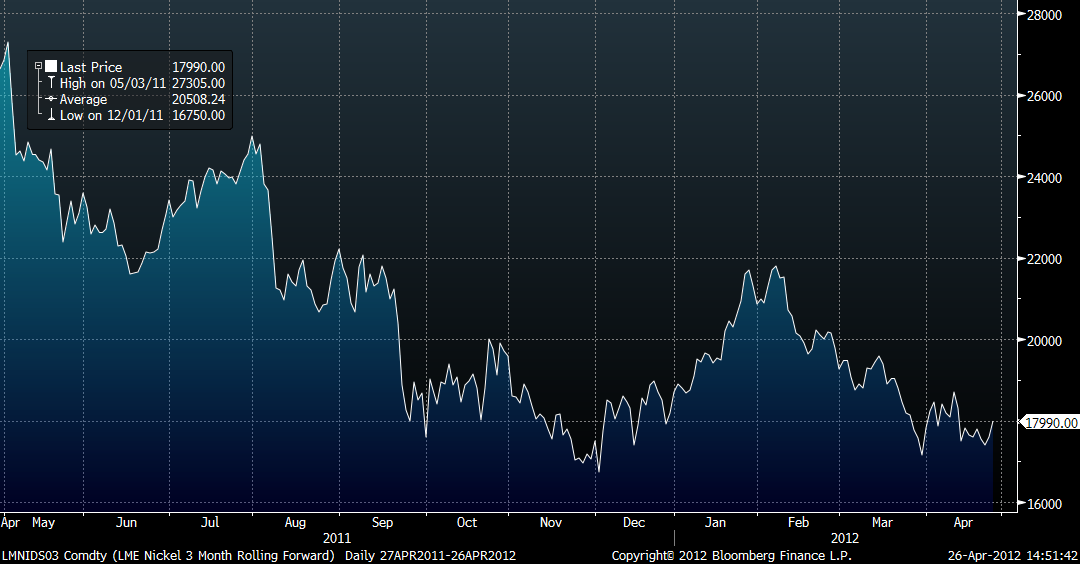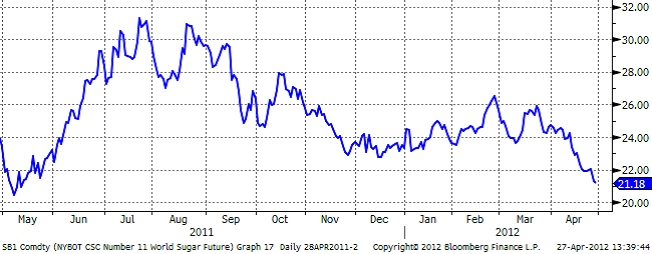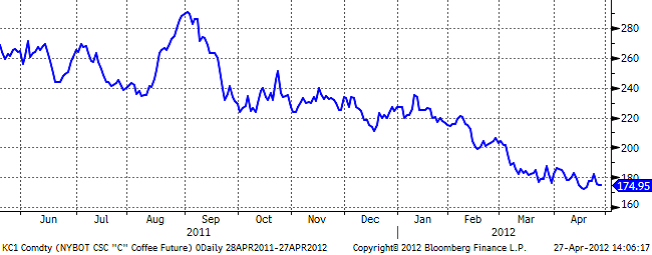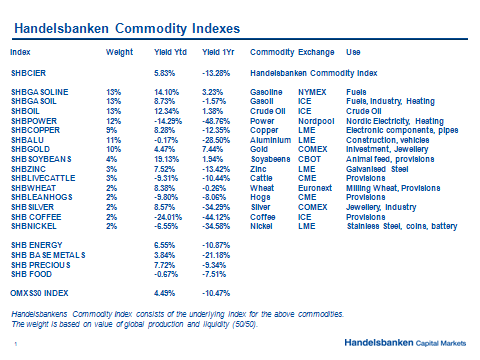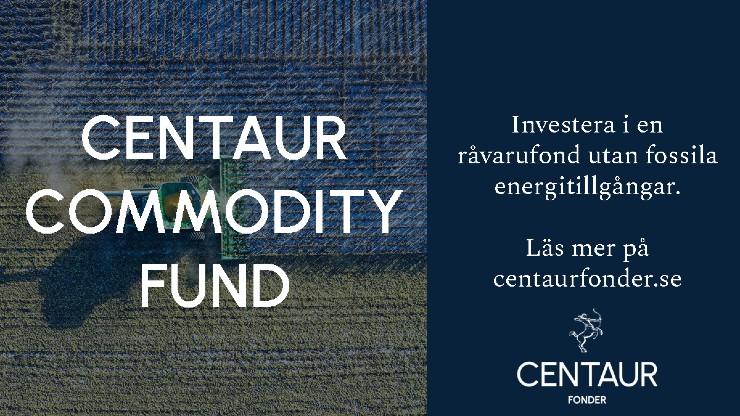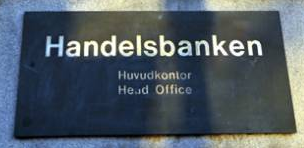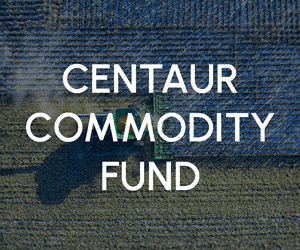Analys
SHB Råvarubrevet 27 april 2012
 Råvaror Allmänt
Råvaror Allmänt
Våra vyer:
- Energi: Neutral
- Basmetaller: Neutral
- Ädelmetaller: Neutral
- Livsmedel: Neutral
Marknaden har sedan förra veckobrevet fortsatt att präglas av svagare riskaptit. Europeiska börser har fallit cirka fem procent och krediter har surnat. Europabaisse och sämre makrostatistik har präglat Europa medan amerikanerna har fokuserat på den förvånansvärt starka rapportsäsongen.
I Europa är utvecklingen fortsatt svagare än väntat. Nu senast pekar det sammanvägda inköpschefsindexet på att BNP började krympa igen i början av det andra kvartalet. I detta makroklimat blir det svårt för de flesta länder att möta sina budgetmål. Obligationsmarknaden uttrycker återigen stress efter att LTRO effekten nu är över. Den politiska agendan innehåller många orosmoln och marknaden befarar sannolikt ett politiskt vakuum.
ECB:s Draghi mjuknade något under veckan. I sitt tal till Europaparlamentet hänvisade han inte längre till ekonomins gradvisa återhämtning utan valde istället att betona valutaunionens svåra utmaningar. Bland annat sade han att likviditetsinjektionerna (LTRO) inte gett lika positiva ekonomiska effekter som ECB hoppats och att det är först nu som den finanspolitiska åtstramningen till fullo gör sig känd.
Vi har länge varit oroliga för Europa men påtalar att vi inte tror att krisen kommer att påverka den globala konjunkturen i större utsträckning.
Energi (neutral)
Elmarknaden
Elmarknaden steg något mot slutet av veckan efter att våta och milda prognoser slagit om till temperaturer under normalt för perioden och något torrare än tidigare vilket framför allt stärkt den korta kurvan. Tredje kvartalet handlas i skrivande stund kring 32 euro (en ökning om ca 2 procent över veckan) vilket är en bra bit under marginalkostnaden för kolgenererad kraft (marginalkostnad för kol sätter ofta priset på nordisk kraft under ett normalår, det vill säga normal hydrologi) som ligger kring 41.25 EUR/MWh. Marknaden har sannolikt diskonterat den goda energibalansen och räknat med väldigt låga priser på el under sommaren. Spotpriset för april har hittills blivit 32.30 euro vilket är 5.5 euro högre än den nivå där aprilkontraktet stängde i mars. Detta har sannolikt genererat en del köpintressen för det tredje kvartalet. Vi ser ut att få strax under 4 TWh nederbörd under kommande 10-dagarna vilket skulle innebära att energibalansen i Sverige + Norge kommer att vara ca +10.5TWh efter vecka 18. Med denna prognos räknar vi med att marknaden handlas oförändrat de kommande dagarna. Inte heller energikol eller utsläppsrätterna ger någon tydlig riktning.
Olja
Oljepriset har fluktuerat en hel del under veckan. På onsdagen föll priset på Brent som lägst till 117,45 USD/fat efter rykten om att Iran kan komma att kompromissa med sitt kärnvapenprogram för att undgå sanktioner från EU. Även stigande lager på olja satta press på priset. Amerikanska lagersiffror från Department of Energy visade råoljelager som steg mer än väntat, 3,9 miljoner fat mot väntade 2,8 miljoner fat. I skrivande stund handlas Brent-oljan på 119,73 USD/fat vilket är cirka 1 USD högre än veckans öppning.
Basmetaller (neutral)
Koppar
Koppar har gått upp 2,59 % under veckan och vi kan summera uppgången under året till 10,62 %. Det som drivit uppgången under veckan är rapporter om att Kina ska dra ned produktionen med 700 000 ton på årsbasis. Priset fann också stöd från Federal Reserve som upprepade att de skulle understödja tillväxten om det behövdes. Intressant i sammanhanget är att det förekommit rykten kring världens största kopparproducent, Codelco. Ryktet gör gällande att Codelco fått köpa in koppar på marknaden för att kunna fullfölja sina leveranskontrakt. Anledningen skulle vara produktionsproblem i deras chilenska gruvor. Trots alla dessa faktorer som talar för en stark kopparmarknad, så är vi neutrala till koppar och basmetaller. Den makroekonomiska utvecklingen är fortfarande svårtydd, med ett flertal utestående frågetecken.
Nickel
Nickel har gått upp 2,72 % under veckan och vi kan summera året till -2,24 %. Ett flertal rapporter under veckan har belyst vilka råvaror som kommer efterfrågas i det framtida Kinas konsumtionsstyrda ekonomi. De råvaror som borde gynnas är aluminium, nickel, palladium och guld. De metaller som missgynnas i en icke-investeringsstyrd ekonomi är stål, koppar och zink. Nickel skulle gynnas eftersom en konsumtionsstyrd ekonomi använder en högre andel rostfritt stål, där nickel är en viktig komponent. Efterfrågan på aluminium skulle öka eftersom Kinas nya elnät skulle baseras på aluminium och inte koppar. Palladium används i bilars katalysatorer och med en ökad miljömedvetenhet i Kina kommer efterfrågan att gå upp. Vår vy på nickel och basmetaller är fortfarande neutral, då vi anser att ovanstående faktorer är av långsiktig natur och kommer inte påverka priset i närtid.
Livsmedel (neutral)
Vete
Vetet i Chicago har gått upp något i pris under veckan, + ca. 0,8 procent, medan vetet i Paris är ned drygt 1,8 procent. Det amerikanska vetet har fått lite torrare och varmare väder under veckan, i nästa vecka väntas återigen lite nederbörd vilket kommer gynna grödan. I Europa är situationen ungefär som den var förra veckan, ganska blött och kallt generellt sett men lite torrt i väst och lite blött i öst. I Ryssland och Ukraina önskas mer regn, men än så länge finns det inga större skäl till oro. Skicket på det amerikanska höstvetet är i stort sett oförändrat sedan förra veckan – d.v.s. väldigt bra! 42 procent av höstvetet har nu gått i ax, att jämföra med snittet för de senaste fem åren om 15 procent. Minst lika väl står det till med vårvetet i USA, sådden bedöms vara avklarad till hela 57 procent, långt mer än genomsnittet för de senaste fem åren om 19 procent. Av vårvetet har dessutom 18 procent nått uppkomststadiet, vid samma tidpunkt var siffran 2 procent.
Majs
Majsen i Chicago noteras upp något sedan förra veckan, + ca. 0,4 procent. Lite regn under veckan har saktat ned arbetet med sådden något, men nederbörden gynnar samtidigt redan sådd majs. I nästa vecka väntas återigen lite torrare väder och sådden bör kunna fortgå i bra takt. I söndags uppgavs 28 procent av den amerikanska majsen vara sådd, inte längre rekordsnabbt men fortfarande klart större andel avklarad än genomsnittet för de senaste fem åren om 15 procent. Från Argentina rapporteras om växlande väderlek men inga större problem för pågående sådd.
Sojabönor
Sojabönorna i Chicago fortsätter uppåt i pris och noteras upp ca. 1,8 procent sedan fredagens stängning. Sojapriset är nu uppe på nivåer vi inte sett sedan mitten av år 2008 och för tillfället är det svårt att se några skäl till att priserna ska vända nedåt. Fortfarande är den allmänna uppfattningen att USDA ännu överskattar den sydamerikanska skörden och framtida nedjusteringar väntas, vilket ger viss osäkerhet och stöd till priserna. Starkt stöd under veckan har kommit även från fortsatt stark efterfrågan, främst från Kina som fortsätter köpa amerikansk soja av både gammal och ny skörd.
Softs
Socker
Priset på socker har sedan årets början sjunkit 2,3 % i London och 6,6 % i New York. Förra veckan såg vi en tillfällig prisuppgång baserat på vad som verkar vara handel inför Ramadan. Egypten har köpt 50,000 ton och Tunisien 54,000 ton inför Ramadan som börjar i juli. Det fortsatta stora utbudet på marknaden fortsätter att hålla sockret på låga nivåer. Estimatet på Brasiliens 2012/13 skörd är upp ca 1,6 M ton. Indien verkar genomgå en normal monsunperiod och kan därmed komma att undvika torka. I och med detta finns det inte längre någon större oro för tillgången av socker på marknaden vilket även det bidragit till prisnedgången i veckan. Sockret är för tillfället nere på elva månaders lägsta.
Kaffe
Priset på kaffe föll i veckan till ett månadslägsta till följd av att man påbörjat Arabicaskörden i delar av Brazilien (områdena Rondonia och Espirito Santo) samt p.g.a. att skörden förväntas bli ca 1,8 % större än tidigare estimat. I veckan publicerades siffror från USA, världens största kaffe konsument, som visar på 3% högre kaffekonsumtion jämfört med året innan. Antalet konsumerade koppar var 88,7 miljarder med ett värde på ca 56,95 miljarder US$.
Handelsbankens Råvaruindex
[box]SHB Råvarubrevet är producerat av Handelsbanken och publiceras i samarbete och med tillstånd på Råvarumarknaden.se[/box]
Ansvarsbegränsning
Detta material är producerat av Svenska Handelsbanken AB (publ) i fortsättningen kallad Handelsbanken. De som arbetar med innehållet är inte analytiker och materialet är inte oberoende investeringsanalys. Innehållet är uteslutande avsett för kunder i Sverige. Syftet är att ge en allmän information till Handelsbankens kunder och utgör inte ett personligt investeringsråd eller en personlig rekommendation. Informationen ska inte ensamt utgöra underlag för investeringsbeslut. Kunder bör inhämta råd från sina rådgivare och basera sina investeringsbeslut utifrån egen erfarenhet.
Informationen i materialet kan ändras och också avvika från de åsikter som uttrycks i oberoende investeringsanalyser från Handelsbanken. Informationen grundar sig på allmänt tillgänglig information och är hämtad från källor som bedöms som tillförlitliga, men riktigheten kan inte garanteras och informationen kan vara ofullständig eller nedkortad. Ingen del av förslaget får reproduceras eller distribueras till någon annan person utan att Handelsbanken dessförinnan lämnat sitt skriftliga medgivande. Handelsbanken ansvarar inte för att materialet används på ett sätt som strider mot förbudet mot vidarebefordran eller offentliggörs i strid med bankens regler.
Analys
Tightening fundamentals – bullish inventories from DOE

The latest weekly report from the US DOE showed a substantial drawdown across key petroleum categories, adding more upside potential to the fundamental picture.

Commercial crude inventories (excl. SPR) fell by 5.8 million barrels, bringing total inventories down to 415.1 million barrels. Now sitting 11% below the five-year seasonal norm and placed in the lowest 2015-2022 range (see picture below).
Product inventories also tightened further last week. Gasoline inventories declined by 2.1 million barrels, with reductions seen in both finished gasoline and blending components. Current gasoline levels are about 3% below the five-year average for this time of year.
Among products, the most notable move came in diesel, where inventories dropped by almost 4.1 million barrels, deepening the deficit to around 20% below seasonal norms – continuing to underscore the persistent supply tightness in diesel markets.
The only area of inventory growth was in propane/propylene, which posted a significant 5.1-million-barrel build and now stands 9% above the five-year average.
Total commercial petroleum inventories (crude plus refined products) declined by 4.2 million barrels on the week, reinforcing the overall tightening of US crude and products.
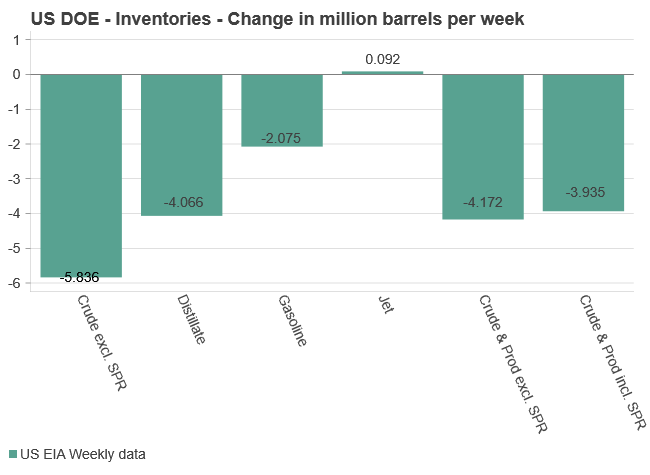

Analys
Bombs to ”ceasefire” in hours – Brent below $70

A classic case of “buy the rumor, sell the news” played out in oil markets, as Brent crude has dropped sharply – down nearly USD 10 per barrel since yesterday evening – following Iran’s retaliatory strike on a U.S. air base in Qatar. The immediate reaction was: “That was it?” The strike followed a carefully calibrated, non-escalatory playbook, avoiding direct threats to energy infrastructure or disruption of shipping through the Strait of Hormuz – thus calming worst-case fears.

After Monday morning’s sharp spike to USD 81.4 per barrel, triggered by the U.S. bombing of Iranian nuclear facilities, oil prices drifted sideways in anticipation of a potential Iranian response. That response came with advance warning and caused limited physical damage. Early this morning, both the U.S. President and Iranian state media announced a ceasefire, effectively placing a lid on the immediate conflict risk – at least for now.
As a result, Brent crude has now fallen by a total of USD 12 from Monday’s peak, currently trading around USD 69 per barrel.
Looking beyond geopolitics, the market will now shift its focus to the upcoming OPEC+ meeting in early July. Saudi Arabia’s decision to increase output earlier this year – despite falling prices – has drawn renewed attention considering recent developments. Some suggest this was a response to U.S. pressure to offset potential Iranian supply losses.
However, consensus is that the move was driven more by internal OPEC+ dynamics. After years of curbing production to support prices, Riyadh had grown frustrated with quota-busting by several members (notably Kazakhstan). With Saudi Arabia cutting up to 2 million barrels per day – roughly 2% of global supply – returns were diminishing, and the risk of losing market share was rising. The production increase is widely seen as an effort to reassert leadership and restore discipline within the group.
That said, the FT recently stated that, the Saudis remain wary of past missteps. In 2018, Riyadh ramped up output at Trump’s request ahead of Iran sanctions, only to see prices collapse when the U.S. granted broad waivers – triggering oversupply. Officials have reportedly made it clear they don’t intend to repeat that mistake.
The recent visit by President Trump to Saudi Arabia, which included agreements on AI, defense, and nuclear cooperation, suggests a broader strategic alignment. This has fueled speculation about a quiet “pump-for-politics” deal behind recent production moves.
Looking ahead, oil prices have now retraced the entire rally sparked by the June 13 Israel–Iran escalation. This retreat provides more political and policy space for both the U.S. and Saudi Arabia. Specifically, it makes it easier for Riyadh to scale back its three recent production hikes of 411,000 barrels each, potentially returning to more moderate increases of 137,000 barrels for August and September.
In short: with no major loss of Iranian supply to the market, OPEC+ – led by Saudi Arabia – no longer needs to compensate for a disruption that hasn’t materialized, especially not to please the U.S. at the cost of its own market strategy. As the Saudis themselves have signaled, they are unlikely to repeat previous mistakes.
Conclusion: With Brent now in the high USD 60s, buying oil looks fundamentally justified. The geopolitical premium has deflated, but tensions between Israel and Iran remain unresolved – and the risk of missteps and renewed escalation still lingers. In fact, even this morning, reports have emerged of renewed missile fire despite the declared “truce.” The path forward may be calmer – but it is far from stable.
Analys
A muted price reaction. Market looks relaxed, but it is still on edge waiting for what Iran will do

Brent crossed the 80-line this morning but quickly fell back assigning limited probability for Iran choosing to close the Strait of Hormuz. Brent traded in a range of USD 70.56 – 79.04/b last week as the market fluctuated between ”Iran wants a deal” and ”US is about to attack Iran”. At the end of the week though, Donald Trump managed to convince markets (and probably also Iran) that he would make a decision within two weeks. I.e. no imminent attack. Previously when when he has talked about ”making a decision within two weeks” he has often ended up doing nothing in the end. The oil market relaxed as a result and the week ended at USD 77.01/b which is just USD 6/b above the year to date average of USD 71/b.

Brent jumped to USD 81.4/b this morning, the highest since mid-January, but then quickly fell back to a current price of USD 78.2/b which is only up 1.5% versus the close on Friday. As such the market is pricing a fairly low probability that Iran will actually close the Strait of Hormuz. Probably because it will hurt Iranian oil exports as well as the global oil market.
It was however all smoke and mirrors. Deception. The US attacked Iran on Saturday. The attack involved 125 warplanes, submarines and surface warships and 14 bunker buster bombs were dropped on Iranian nuclear sites including Fordow, Natanz and Isfahan. In response the Iranian Parliament voted in support of closing the Strait of Hormuz where some 17 mb of crude and products is transported to the global market every day plus significant volumes of LNG. This is however merely an advise to the Supreme leader Ayatollah Ali Khamenei and the Supreme National Security Council which sits with the final and actual decision.
No supply of oil is lost yet. It is about the risk of Iran closing the Strait of Hormuz or not. So far not a single drop of oil supply has been lost to the global market. The price at the moment is all about the assessed risk of loss of supply. Will Iran choose to choke of the Strait of Hormuz or not? That is the big question. It would be painful for US consumers, for Donald Trump’s voter base, for the global economy but also for Iran and its population which relies on oil exports and income from selling oil out of that Strait as well. As such it is not a no-brainer choice for Iran to close the Strait for oil exports. And looking at the il price this morning it is clear that the oil market doesn’t assign a very high probability of it happening. It is however probably well within the capability of Iran to close the Strait off with rockets, mines, air-drones and possibly sea-drones. Just look at how Ukraine has been able to control and damage the Russian Black Sea fleet.
What to do about the highly enriched uranium which has gone missing? While the US and Israel can celebrate their destruction of Iranian nuclear facilities they are also scratching their heads over what to do with the lost Iranian nuclear material. Iran had 408 kg of highly enriched uranium (IAEA). Almost weapons grade. Enough for some 10 nuclear warheads. It seems to have been transported out of Fordow before the attack this weekend.
The market is still on edge. USD 80-something/b seems sensible while we wait. The oil market reaction to this weekend’s events is very muted so far. The market is still on edge awaiting what Iran will do. Because Iran will do something. But what and when? An oil price of 80-something seems like a sensible level until something do happen.
-

 Nyheter3 veckor sedan
Nyheter3 veckor sedanMahvie Minerals växlar spår – satsar fullt ut på guld
-
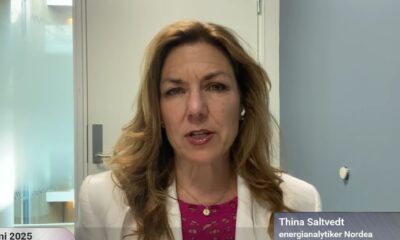
 Nyheter4 veckor sedan
Nyheter4 veckor sedanUppgången i oljepriset planade ut under helgen
-

 Nyheter4 veckor sedan
Nyheter4 veckor sedanLåga elpriser i sommar – men mellersta Sverige får en ökning
-

 Nyheter2 veckor sedan
Nyheter2 veckor sedanOljan, guldet och marknadens oroande tystnad
-

 Nyheter2 veckor sedan
Nyheter2 veckor sedanJonas Lindvall är tillbaka med ett nytt oljebolag, Perthro, som ska börsnoteras
-

 Analys3 veckor sedan
Analys3 veckor sedanA muted price reaction. Market looks relaxed, but it is still on edge waiting for what Iran will do
-

 Analys4 veckor sedan
Analys4 veckor sedanVery relaxed at USD 75/b. Risk barometer will likely fluctuate to higher levels with Brent into the 80ies or higher coming 2-3 weeks
-

 Nyheter2 veckor sedan
Nyheter2 veckor sedanDomstolen ger klartecken till Lappland Guldprospektering


